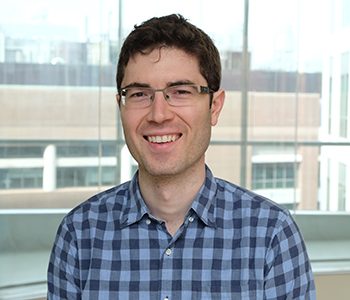Dustin Griesemer was a graduate student from 2012 to 2017. He graduated from the Bioinformatics & Integrative Genomics Ph.D. program in 2017 and Harvard Medical School in 2019.
Dustin developed the Massively Parallel Reporter Assay for 3’UTR variants (MPRAu), an episomal-based, high-throughput screen for testing 3’UTR variants for direct impacts on RNA expression or translation. MPRAu was an interdisciplinary collaboration between the Sabeti, Novina, Finucane, Montgomery, and Bartel labs, and was supported by NIH and NSF grants. This expanded on prior work by Sabeti lab alumnus Ryan Tewhey which nominated hundreds of non-coding variants for causal roles in eQTL and GWAS regions. MPRAu is a sensitive, highly reproducible, and high-throughput tool capable of testing tens of thousands of 3’UTR variants simultaneously to identify those that impact transcript abundance (tamVars). Furthermore, MPRAu is capable of dissecting the region surrounding a tamVar to identify possible functional mechanisms, such as miRNA binding sites or secondary structures. With the help of Sabeti lab graduate student James Xue and Sabeti lab postdoctoral fellow Steve Reilly, MPRAu was applied to six cell lines to assay 12,173 3’UTR variants. This identified 2,368 3’UTR variants that modulate transcript abundance across six cell lines, several of which have already been nominated to be causal in disease and positive selection, and many hundreds of new candidates. Dustin also helped organize the 2012 Holiday Card and was a proud member of the Sabeti lab volleyball team.
Dustin is currently an Anesthesiology resident physician at Brigham and Women’s Hospital. In the future, he hopes to use regulatory genomics to better understand maladaptive responses to surgical insult as well as critical illness.
“Being a part of the Sabeti lab was one of the most inspiring experiences I have had. I had the chance to work with, and still keep in touch with, exceptional scientists. My colleagues had a passion for life in the lab but also out of the lab, and the lab outings were as lively as the project discussions. Last but not least, Pardis has the unique ability to maintain the productivity of a large lab but yet make everyone feel at home, which was itself also inspiring to see.”


